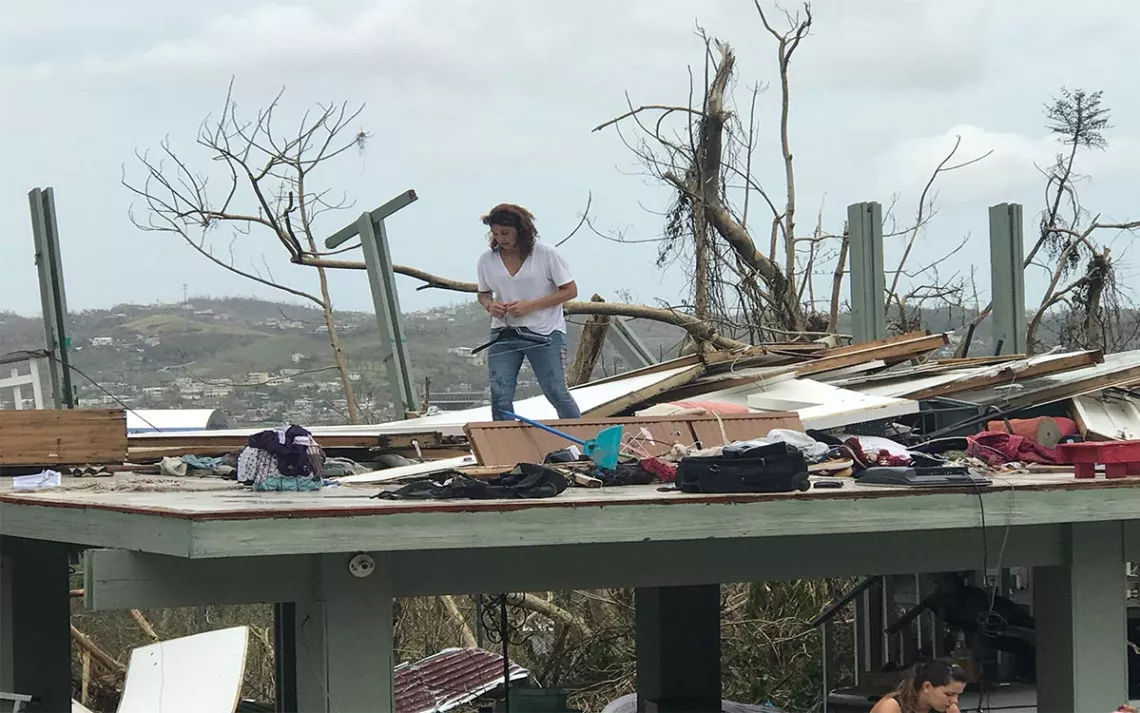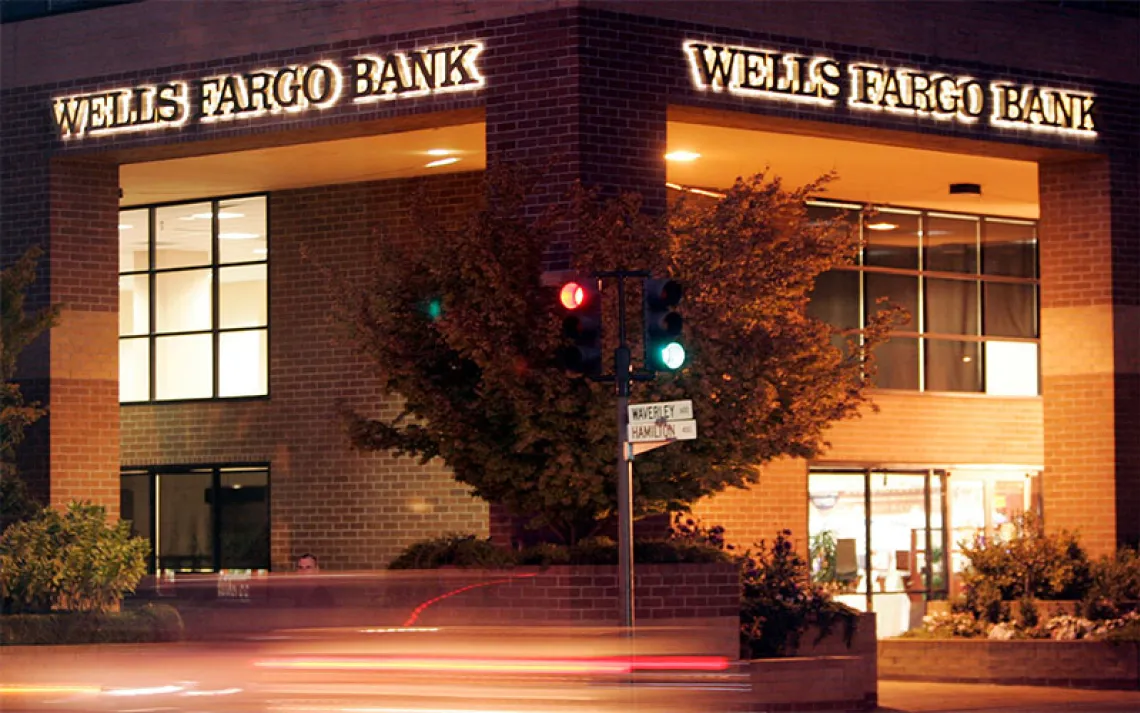Puerto Ricans Still Lack Power Months After Hurricane Maria
One businesswoman’s story of trying to muddle through the continuing crisis

Photo courtesy of Karla Desobeda Torres Ortega
“We work harder and we earn less.” That’s how life today feels for Karla Desobeda Torres Ortega, the co-owner of a bar and restaurant located in the hills outside the Puerto Rican town of Cayey. “Everything is just a lot harder. Some days I wake up and I get busy, and other days I wake up sad and I don’t know what I am going to do. . . . I think it’s happening to everyone. All Puerto Ricans feel the same.”
More than 100 days have passed since Hurricane Maria slashed its way across the U.S. territory, and still more than half a million households and businesses lack reliable access to electricity. Puerto Ricans are struggling to maintain a semblance of normal life amid the longest mass blackout in U.S. history. While many people there express frustration at the island government’s feckless response and anger at what they see as abandonment by federal authorities, a weary stoicism has come to dominate many islanders’ emotions. With officials saying that power won’t be fully restored across the island until as late as May, Puerto Ricans are coming to accept that the once unthinkable—life without power—is now part of their daily existence. “Everyone says the same thing: People are tired,” Torres says. “That is the state of things.”
Torres’s story is important not necessarily because it is exceptional, but because it is so perfectly ordinary. A successful, 36-year-old entrepreneur from the east-central part of the island, Torres is neither among the very poor in the island’s mountainous interior nor among the relatively affluent of the cities of Ponce or San Juan. She is just one of the huge number of Puerto Ricans whose lives were rocked by the hurricane, and who is now struggling to recover as the blackout continues.
“Everybody lost something in the hurricane,” a doctor in the city of Caguas says. “Their home, their business.”
Torres lost both.
Like many Puerto Ricans, Torres admits that she was unprepared for Hurricane Maria and the devastation it brought to the island. As the hurricane approached Puerto Rico in mid-September, Torres at first figured she would pass the storm at her small home in the hills between Cayey and Caguas. Then her mother persuaded her to go to someplace safer and stronger. Torres battened down her house, packed up a few belongings and her two dogs and one cat, and went to her girlfriend’s place in the Miramar district of San Juan. “I bought some Manchego cheese, some nice bread and some wine, like it was going to be a date or something,” Torres recalls. “It was very poorly planned on my part.”
In the immediate aftermath of the storm, Torres, like just about everyone else on the island, spent the next week helping to clear the streets of debris and trying to get in touch with friends and loved ones to see whether they were OK. She and her girlfriend, Natalia, scrambled for necessities; Torres spent a full two days waiting in line at a gas station for fuel. Four days after the hurricane, Torres finally got in touch with her father in Cayey and decided to return to her home to check on its condition.
Downed trees still chocked many roads, and Torres and her father had to walk the last six miles of blacktop to reach her property. When they finally arrived, she was blown away to find her house completely destroyed. “There wasn’t even one wall standing. There wasn’t even the ceiling,” Torres remembers. “It was like it didn’t exist."
Torres’s home had been a mix of concrete block and wood construction. It felt pretty sturdy to her, and she had imagined it would weather the storm. She couldn’t have been more wrong. Her roof was blown clear off the building and landed four homes away. Her refrigerator was thrown from the second story down to the ground. Everything—her furniture, her clothes, her books, her personal keepsakes—was soaked and covered with mud. “It was like torture, to see everything destroyed like that,” she says.

Above: Photo courtesy of Karla Desobeda Torres Ortega
Below: Photo by Joa Rodríguez


Sign up to receive Sierra News & Views
Get articles like this one sent directly to your inbox weekly.
With this action you affirm you want to receive Sierra Club communications and may vote on policy designated by the Sierra Club Board.
The sting of witnessing her home smashed to pieces and most of her possessions destroyed was worsened by the fact that the storm had also wiped her out financially. Torres had purchased the small, two-bedroom house just six months earlier. She paid $65,000 in cash, a figure that amounted to her entire life savings. Like most Puerto Ricans, Torres had no homeowner’s insurance; according to federal statistics, less than 1 percent of houses on the island were covered by flood insurance before the storm. “I didn’t even have a T-shirt. I didn’t even have a bag,” she says. “I thought, 'What am I going to do? What’s going to happen?'”
Her financial worries were compounded by concerns about her business. If that, too, were destroyed, then she would be out of a job as well as a home.
Ten days after first visiting her demolished home, Torres finally made it to Tetas, the bar and restaurant she had established with an ex-girlfriend. Her fears were confirmed as soon as she arrived. Downed trees clogged the narrow road leading to the restaurant, and Torres had to climb over a mass of deadfalls just to reach the entrance. The scene was bad: Falling limbs had smashed part of the outdoor bar, and much of the furniture was destroyed. The place was a mess.
“My emotions exploded when I got to the restaurant, because this was all of my earnings,” Torres says. “I couldn’t reopen the restaurant, because all of Puerto Rico was broken.” She worried that she would run out of money before she was able to reopen the business. This is my reality? she remembers thinking. “I collapsed emotionally. It was just too painful.”
Torres spent much of the next week in bed “disconnected from reality to gather my strength,” she says. In the midst of her depression, her first instinct was to just abandon the restaurant and move on. But eventually, her longtime business partner and ex-girlfriend, Eva, convinced her that they should try to rebuild. “Eva is so strong, and she was like, ‘We have to do this. We can do it if we do it together.'"
The two women had started Tetas: La Cocina back in 2009. (Tetas means “tits” in Spanish, but the name isn’t intended to be salacious or cheeky; it refers to a pair of mountain peaks known by that name.) The operation started as a pop-up restaurant catering to students at the university in Cayey, and it was an immediate hit. The couple soon transitioned to a bare-bones bar located on a busy intersection in a working-class area. “We were in this poor neighborhood but doing really nice food for a fair price,” Torres recalls. The place was regularly packed. “It was going crazy. People couldn’t even fit inside.”
In 2016, the couple, eager for a slower pace, moved the whole operation to the countryside. The crowds kept coming and, by the middle of 2017, the two had recouped their initial investments in the business. Then Hurricane Maria wrecked everything.
Once Torres and her business partner decided to rebuild their restaurant, the real work began. It took the pair and their friends and family a full two months (Torres says it felt more like three months) of nearly nonstop work to repair the damage caused by the hurricane. Finally, on the weekend before Thanksgiving, the restaurant was in good enough shape to reopen, even though, like much of the island, they had no power.
The reopening was a success. Regulars returned, and some new customers showed up. The bar was often full in the weeks surrounding Christmas and New Year's.
But that doesn’t mean things have been easy. While the daily hardship of life without electricity has become a kind of quotidian white noise, the damage from the continuing blackout ripples outward. With many people still out of work or with less earnings, the bar has cut back on its hours and its staffing, too. Before the storm, Tetas had 11 employees; now it has five. Even as revenues are lower, costs are higher. There are new expenditures for ice and for fuel to run a generator. Ingredients are more expensive. “We are doing everything we can to stay open, but it’s complicated,” Torres says. “We continue working and to keep trying to keep our country working."
Asked whether she has considered following the hundreds of thousands of Puerto Ricans who have left the island since the hurricane, Torres shakes her head no. If anything, the storm has strengthened her connection to the island and awakened in her a commitment to building a better Puerto Rico, even if that just means maintaining a place for people to gather, talk, and relax a bit.
“I can start little by little, block by block,” she says. “This might sound strange, but I think the storm has given us a better perspective. What do we want as a country? We don’t want to be an island Disneyland. We want to be a good place for kids, for families. It’s not a marketing cliché: We want to build a Puerto Rico for Puerto Ricans. People are scared, but right now Puerto Ricans are also really courageous.”
 The Magazine of The Sierra Club
The Magazine of The Sierra Club



